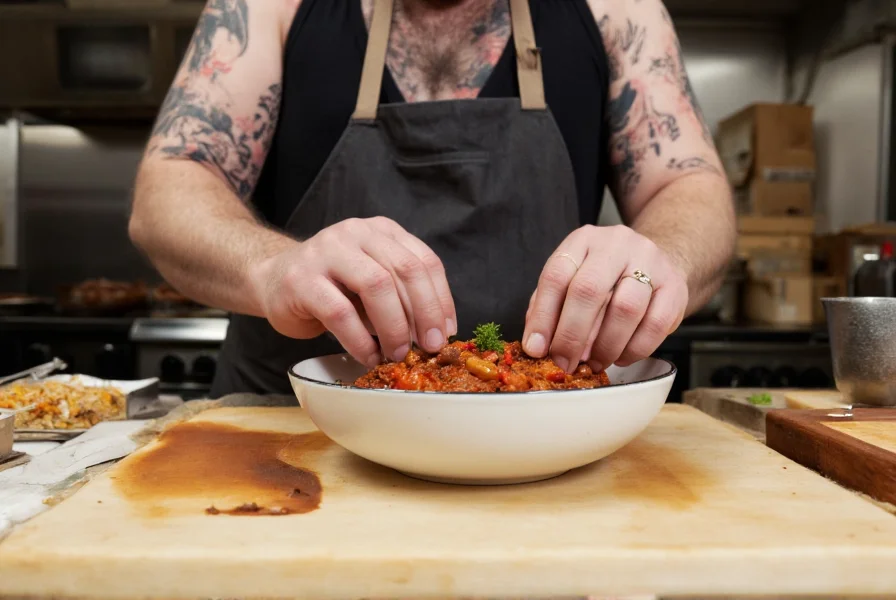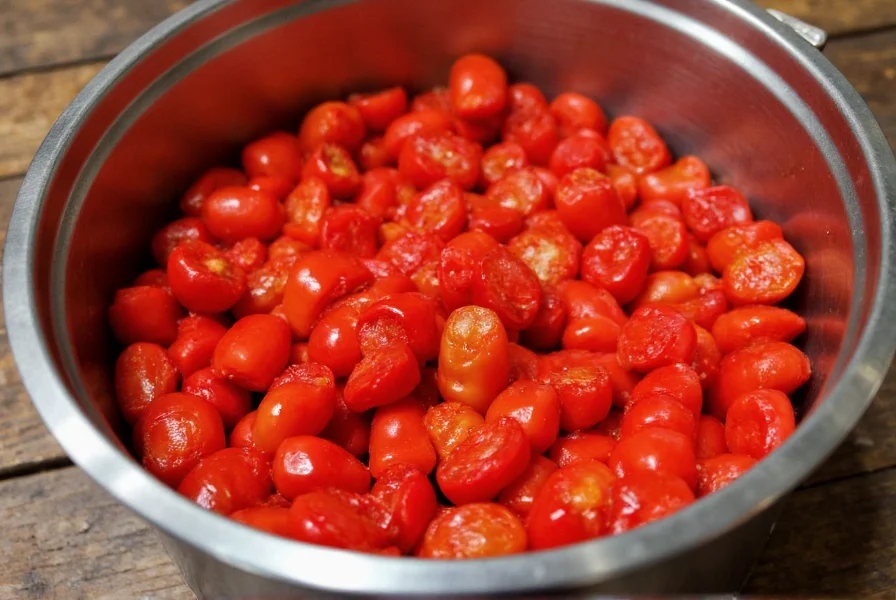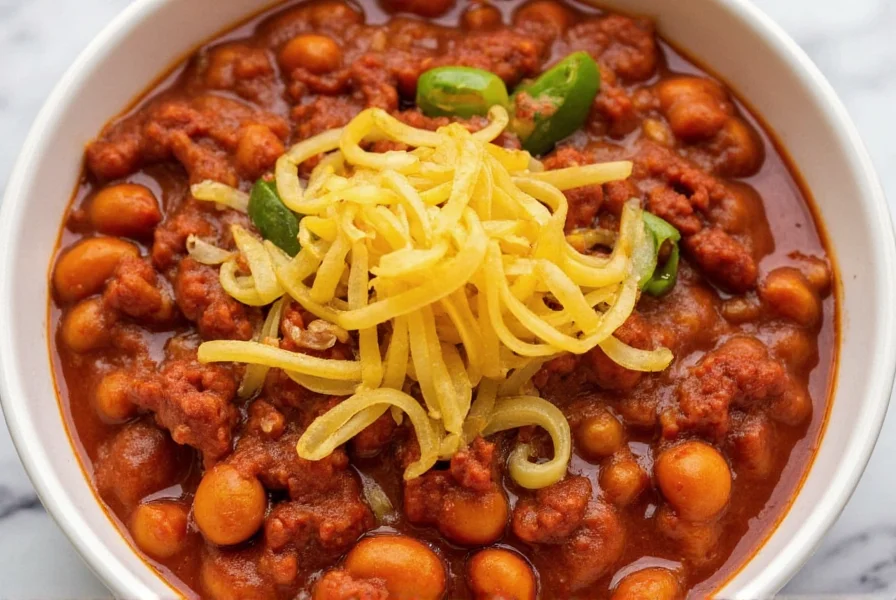Creating championship-level chili requires understanding what separates ordinary recipes from those that consistently earn top honors at competitions. Unlike everyday chili, award-winning versions follow specific principles that appeal to professional judges while maintaining exceptional flavor balance and texture. The difference between good and prize-winning chili often comes down to meticulous attention to detail in ingredient selection, cooking technique, and flavor development.
The Science Behind Award-Winning Chili
Professional chili competitions judge entries on multiple dimensions including appearance, aroma, flavor balance, and mouthfeel. Successful recipes create a complex flavor profile where no single element dominates. The ideal prize winning chili recipe competition entry achieves what judges call "the holy trinity" of chili characteristics: deep meaty richness, balanced heat that enhances rather than overwhelms, and subtle background notes that surprise the palate.
Temperature control proves critical throughout the cooking process. Starting with properly seared meat creates Maillard reactions that develop rich umami flavors. Maintaining a gentle simmer rather than a rolling boil prevents toughening the meat while allowing flavors to meld gradually. Most championship chili makers agree that the final resting period—typically 12-24 hours after cooking—allows flavors to integrate fully, transforming good chili into exceptional.

Essential Ingredients for Competition Success
What makes chili win competitions begins with ingredient selection. While regional preferences vary, most professional chili competitions follow International Chili Society guidelines that prohibit beans in traditional red chili categories. The meat selection represents your foundation—many champions use a combination of chuck roast for richness and brisket for texture.
| Chili Component | Competition Standard | Champion's Variation |
|---|---|---|
| Meat-to-liquid ratio | 60:40 | 65:35 for thicker texture |
| Heat level (Scoville) | Medium (3,000-5,000) | Layered heat (2,500-7,500) |
| Cooking time | 3-4 hours | 6-8 hours plus resting |
| Secret ingredient | None | Dark chocolate or espresso |
The chili pepper selection process deserves special attention in professional chili making. Rather than relying solely on cayenne or red pepper flakes, champions typically use a blend of dried peppers like ancho for fruitiness, guajillo for earthiness, and chipotle for smokiness. Toasting whole dried peppers before grinding releases essential oils that create more complex flavor than pre-ground spices.
Step-by-Step Championship Recipe Framework
While exact recipes remain closely guarded secrets among professional chili makers, the following framework represents techniques used in multiple award winning chili recipes:
- Meat preparation: Cube 3 lbs chuck roast and 2 lbs brisket into 1/2-inch pieces. Sear in batches to develop crust without steaming.
- Spice foundation: Toast 2 oz each ancho, guajillo, and chipotle peppers, then grind with 2 tbsp cumin, 1 tbsp oregano, and 1 tsp cinnamon.
- Flavor building: Sauté onions and garlic, add tomato paste and cook until brick red, then incorporate spices for 2 minutes.
- Liquid component: Use 4 cups beef stock plus 1 cup strong coffee and 2 oz dark chocolate (70%+).
- Cooking process: Simmer gently for 6-8 hours, skimming fat periodically, then rest refrigerated for 24 hours before reheating.
This professional chili cook secret creates the deep, rounded flavor profile that distinguishes competition winners. The coffee enhances meat flavors without making the chili taste like coffee, while the dark chocolate provides subtle sweetness that balances acidity and heat.
Common Mistakes That Cost Competitions
Even experienced cooks make errors that prevent their chili from winning. Understanding chili competition judging criteria reveals frequent pitfalls:
- Over-reliance on heat: Many competitors mistakenly believe hotter equals better, but judges prefer balanced heat that complements rather than dominates.
- Insufficient resting time: Serving chili immediately after cooking misses the critical flavor integration period.
- Inconsistent texture: Some pieces of meat overcooked while others remain tough creates poor mouthfeel.
- Ignoring presentation: In competitions, appearance matters—chili should have a rich, glossy surface without excessive grease.

Advanced Techniques from Professional Champions
What separates professional chili cook secrets from amateur attempts often involves subtle techniques:
Many champions use a two-stage cooking process—first braising the meat separately with aromatics, then incorporating it into the main chili base. This ensures perfect meat texture while developing maximum flavor. Others employ the "spice bloom" technique, frying ground spices in a small amount of fat before adding liquids to intensify their flavor compounds.
The perfect texture for competition chili requires careful attention to meat-to-liquid ratio. Too thin appears watery to judges; too thick seems pasty. The ideal consistency coats the spoon but flows smoothly when tilted. Professional chili makers achieve this through precise reduction during cooking and careful skimming of excess fat during the resting period.
Understanding Competition Judging Criteria
Knowing how chili competitions actually judge entries provides crucial insight. Most follow a points system evaluating:
- Appearance (20 points): Rich color, appropriate thickness, minimal grease separation
- Aroma (20 points): Inviting scent with balanced spice notes, no raw or burnt elements
- Flavor (40 points): Complexity, balance of heat/sweet/savory, depth of flavor
- Mouthfeel (20 points): Texture of meat, overall consistency, pleasant eating experience
Successful competitors tailor their recipes to these criteria rather than personal preferences. The best how to make contest winning chili approach involves creating a flavor journey where initial impressions give way to subtle background notes that surprise judges on the finish.











 浙公网安备
33010002000092号
浙公网安备
33010002000092号 浙B2-20120091-4
浙B2-20120091-4